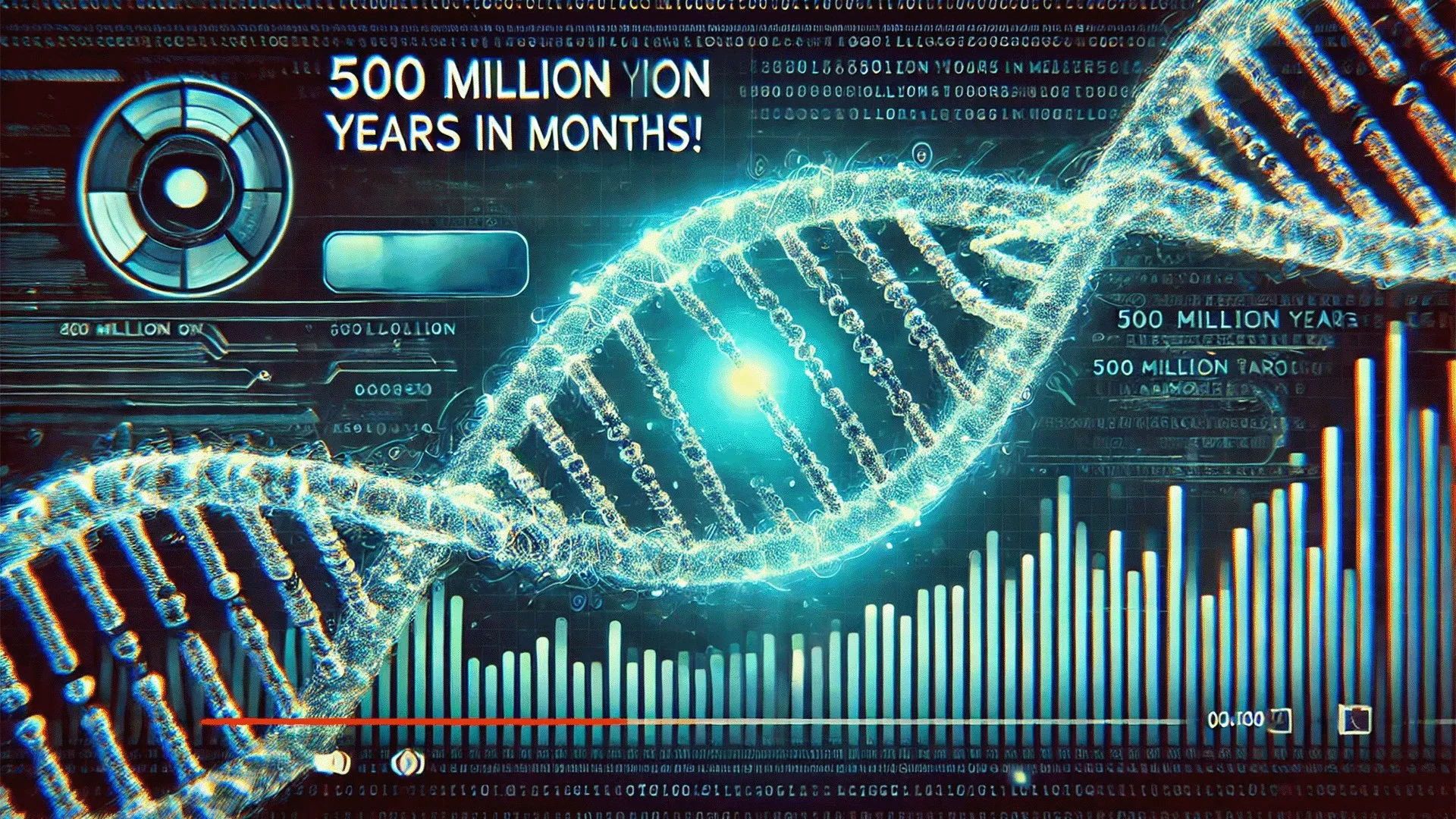The Dawn of Programmable Biology: ESM3’s Impact on Science The interplay between artificial intelligence and biology has always promised groundbr
The Dawn of Programmable Biology: ESM3’s Impact on Science
The interplay between artificial intelligence and biology has always promised groundbreaking advancements, but the AI model ESM3 from Evolutionary Scale has redefined what’s possible. Imagine compressing the evolutionary journey of millions of years into mere months of computer processing and using that insight to create entirely new proteins—life’s fundamental building blocks. This leap isn’t just a scientific marvel; it signals a new frontier in programmable biology, with far-reaching implications.
Who is Evolutionary Scale?
The name Evolutionary Scale might be new to some, but this research lab emerged in 2023 with a bold ambition: to make biology programmable using AI. Their credentials are impressive—they’re the team that created ESM1 at Meta (formerly Facebook). While previous AI models like AlphaFold from DeepMind have reshaped how scientists predict protein structures, ESM3 steps into uncharted territory. ESM3 is akin to GPT models but designed for understanding and creating proteins.
Understanding the Genius of ESM3
ESM3 isn’t your typical protein-analysis tool. It’s a generative AI that has been trained on a dataset of 2.78 billion protein sequences. This massive knowledge base allows ESM3 to not only analyze proteins but generate new ones, which is a monumental shift from traditional approaches. To visualize this scale, imagine giving an AI access to an entire library that comprehensively covers every aspect of protein biology—from bacteria to redwood trees.
What sets ESM3 apart? Most protein-focused AIs only analyze sequences—the linear order of amino acids that form a protein. ESM3 goes beyond by understanding the 3D structure (the protein’s folded shape) and the function it performs within a cell. This approach grants ESM3 a nuanced grasp of proteins that resembles not just reading an alphabet but understanding entire stories.
The GFP Breakthrough: Proof of Concept
One of ESM3’s most talked-about achievements is the creation of a novel green fluorescent protein (GFP). GFPs are naturally occurring proteins that make jellyfish glow and have been used in biological research as cellular markers for years. Scientists at Evolutionary Scale tasked ESM3 with creating new glowing proteins. Within months, and after iterations that took only a fraction of nature’s evolutionary timeline, ESM3 delivered a never-before-seen protein that glowed even brighter than its natural counterparts.
This accomplishment demonstrated that AI can do more than just mimic nature—it can improve upon it, forging new paths for research and application.
Revolutionizing Drug Discovery and Medicine
ESM3’s capabilities herald a significant change in drug discovery. Traditional drug development is often a long and costly endeavor filled with trial and error. With ESM3’s ability to design proteins with specific functions, researchers can now develop targeted treatments that are both effective and have minimal side effects.
Imagine precision medicines designed to align perfectly with a patient’s genetic makeup. Personalized treatments could be produced for conditions linked to individual mutations, like variations in the MTHFR gene, known to affect the processing of certain vitamins. Instead of broad-spectrum drugs that might have wide-ranging side effects, ESM3’s creations could offer laser-focused solutions.
Check out how Robot Revolution can benefit your daily life, click here to find more.
Material Science and New Biomaterials
The implications of ESM3 extend beyond the medical field. In material science, designing proteins with unprecedented strength, flexibility, or conductivity could revolutionize industries. Sustainable and biodegradable materials created with ESM3’s protein designs could be used in packaging, electronics, and even construction. Self-healing materials inspired by the regenerative abilities found in nature are not just sci-fi anymore—they are potential products of AI-assisted research.
A Game Changer for Climate Solutions
ESM3’s protein-engineering capabilities could also address global challenges like climate change. By designing proteins that efficiently bind to carbon dioxide, scientists could develop biological tools for capturing and storing carbon at a scale far beyond current technologies. This innovation could be part of a broader strategy to combat rising CO2 levels, complementing existing carbon-reduction initiatives.
Democratizing Access: The Future of ESM3
One of the most exciting aspects of Evolutionary Scale’s mission is their commitment to accessibility. The lab has made an open-source version of ESM3 available for research and is running a closed beta API for specific applications. By partnering with tech giants like AWS and NVIDIA, they’re working to ensure that this technology isn’t restricted to a select few but available to scientists worldwide. Such collaborations are crucial for nurturing innovation and driving real-world applications of ESM3’s capabilities.
Potential Risks and Ethical Considerations
While the promises of ESM3 are exhilarating, we must tread carefully. With the ability to design proteins comes the potential for unintended consequences, such as the development of harmful biological agents. The misuse of such powerful technology for creating bioweapons is a serious concern that global authorities must preemptively address.
Moreover, the philosophical implications are profound. What does it mean to program life? As we gain control over designing biological functions, questions about the ethical boundaries and responsibilities of such power emerge. Drawing parallels to germline gene editing, where a global consensus prohibits changes that affect future generations, researchers and policymakers may need to establish clear guidelines for AI-driven protein design to prevent irreversible consequences.
Real-World Applications: From Concept to Practice
To visualize how ESM3 could be used practically, consider the pharmaceutical industry. Current drug discovery often relies on approximate solutions that may work but can have significant drawbacks. With ESM3, a biotech company could design proteins tailored to precisely interact with a disease pathway, vastly improving treatment efficacy and reducing side effects.
Another potential application is in agriculture. Crops engineered with ESM3-designed proteins could be more resilient to droughts, pests, and diseases, offering a sustainable solution to feeding the growing global population.
The Road Ahead
While ESM3’s debut is nothing short of revolutionary, it represents only the beginning. Think of it as the Model T of protein engineering. Future iterations could be akin to Ferraris—more advanced, more efficient, and capable of even more complex tasks. As the technology evolves, so will its applications, expanding beyond healthcare and material science to areas we may not yet even imagine.
Conclusion: Balancing Promise and Precaution
ESM3’s ability to simulate evolution and create novel proteins puts humanity at the forefront of a new era—one where biology can be as programmable as software. This opens the door to a future where personalized medicine, sustainable materials, and environmental solutions are within reach. However, it also calls for a collective responsibility to wield this power wisely, ensuring that the potential risks are mitigated through robust ethical and regulatory frameworks.
As we push the boundaries of what AI can do in biology, the excitement is palpable. The path ahead is filled with both promise and pitfalls, and it’s up to researchers, policymakers, and society to navigate this new landscape with care.
Check out how Robot Revolution can benefit your daily life, click here to find more.


